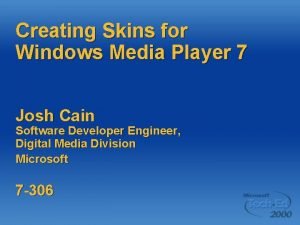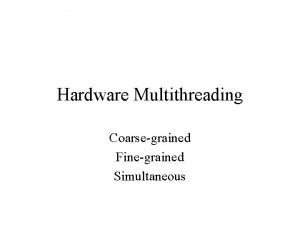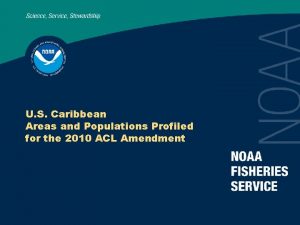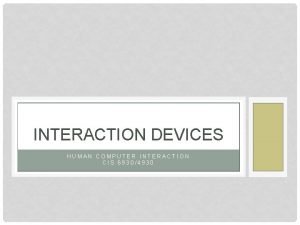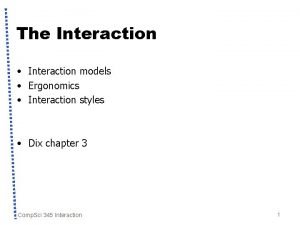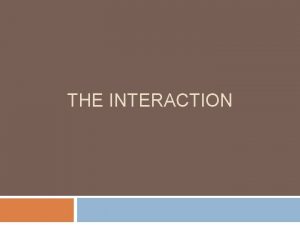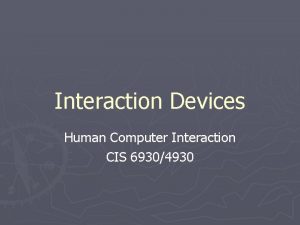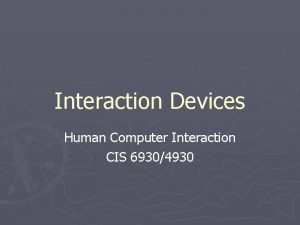Personalising Interaction using Profiled Skins Nick Fine nick






























- Slides: 30

Personalising Interaction using Profiled Skins Nick Fine nick. fine@brunel. ac. uk Research Start: March 2004

Section 1 Background Information

Motivations for Research User Interfaces are designed for average or typical users……yet none of us are individually average. Why use interfaces designed for the everyman?

User-centred design seeks to “know the user” (Neilsen 1993) – yet we ignore the user and design for the average user.

Designing for Diversity Designing for the average user is designing for individual similarities. This research explores whether individual differences can be used to segment user populations, so that user interfaces can be designed for subsets of a larger population – towards a more personalised interface and subsequent interaction.

Towards the Individual: Designing for Subsets

Skins • A skin is considered to be the appearance of the user interface, including graphic, haptic, and/or aural patterns. • Skins are widely used to allow personalisation of the interface • Facilitate changing the user interface without needing to recode • Increasing availability of skinning features in operating systems and applications • Provide great flexibility – Financially cost effective to whitebox – Easy to localise applications



Motivations for Research By providing skin selection as a feature of many applications we are in effect giving the user the ability to change the quality of their interaction. The ability to reskin an interface provides users the means to adapt the user interface but does not inform them as to how

Skins and Interaction Changing the user interface changes the quality of the Interaction : • Change by aesthetic affect (Norman 2004, Reeves and Nass 1996) • Change in configuration and usability (e. g. Fitts Law (access time is a function of distance and target size ))

Pilot Study Results – Study 1 Saati, Salem and Brinkman (2005): Interactive Behaviour and User Personality Significant correlations (p=0. 01) between Clicks per day and button interclick time for extraversion and neuroticism Extraversion -. 64** (friendliness -. 54*, gregariousness -. 53*) Neuroticism (anxiety. 67**, self-consciousness. 61*) Openness to Experience (liberalism -. 60*)

Pilot Study Results – Study 2 Saati, Salem and Brinkman (2005): User Personality and Skin Colour Significant correlations (p=0. 05) between skin colours: Blue (E + C), Yellow (C) and Black (A + O) Blue: Extraversion -. 53* (assertiveness -. 48*, cheerfulness (-. 53*), conscientiousness (achievement-striving -. 51*). Yellow: Conscientiousness (achievement-striving -. 48*). Black: Agreeableness (altruism -. 46*), Openness to experience (imagination. 73**)


Section 2 Experimental Details

Goals • To develop the experimental tools and infrastructure to observe and record interactive behaviours relating to the user interface skin • To develop an empirically validated model to predict the most effective user interface skin for a user based upon their personality • To develop a means for predicting user type without requiring user responses

Experimental Details How individual differences affect interactive behaviour as a function of user interface skin Dependent Variable Independent Variable Interactive Behaviour User Interface Skins Personality Hypothesis: Changing the user interface skin will change interactive behaviour for different personality types

Pro. Skin Development Cycle

Database Overview

Infrastructure

Profiled Skins (Pro. Skin) Profiled Skins are user interface skins appropriate to a certain subset of users of similar profile Pro. Skin = image files + XML definition

Pro. Skin Components : XML

Pro. Skin Interface Components : Images State : Background Image State : On Normal Mouse. Over Button Images Off Radio Station Directory Status Indicator




Next Steps Final Release in September 2005 (first data) Writing up Chapters 2 and 3 Consider Pro. Skin browser experiment Offline experiments Additional independent variables, e. g. cognitive style

Publications International Conference on Entertainment Computing 2004 Fine, N. , & Brinkman, W. -P. (2004). Avoiding Average: Recording Interaction Data to Design for Specific User Groups. In M. Rauterberg Entertainment Computing - ICEC 2004 (p. 398 -401). Berlin: Springer. European Symposium on Ambient Intelligence 2004 Fine, N. , & Brinkman, W. -P. (2004). Informing Intelligent Environments: Creating Profiled User Interfaces. In E. van den Hoven, W. IJsselsteijn, G. Kortuem, K. van Laerhoven, I. Mc. Clelland, E. Perik, N. Romero, and B. de (Ed. ) Adjunct Proceedings of EUSAI , (p. 15 -17).

Website www. proskin. org

Questions?
 Skins nick
Skins nick Small juicy fruits with thin skins
Small juicy fruits with thin skins Windows media player classic skin
Windows media player classic skin Monologue themes
Monologue themes Omega psi phi second district
Omega psi phi second district Kmplayer skins 2020
Kmplayer skins 2020 Textbooks
Textbooks Nu skins
Nu skins Skins synopsis
Skins synopsis Sour cream walls figure of speech
Sour cream walls figure of speech “cramped holes” is a metaphor for the
“cramped holes” is a metaphor for the Accumulator ac
Accumulator ac Using system using system.collections.generic
Using system using system.collections.generic Fine grained multithreading
Fine grained multithreading Parte del corpo
Parte del corpo Perché i numeri naturali sono infiniti
Perché i numeri naturali sono infiniti Kelly fine
Kelly fine Fine teknik
Fine teknik Da cosa è introdotta la subordinata
Da cosa è introdotta la subordinata Good morning good morning to you i am glad to see you
Good morning good morning to you i am glad to see you Fine kinney metodu
Fine kinney metodu Fine grained multithreading
Fine grained multithreading Foothills fine arts academy
Foothills fine arts academy Arraytrack: a fine-grained indoor location system
Arraytrack: a fine-grained indoor location system Dc al fine
Dc al fine Fine grained multithreading
Fine grained multithreading Fine structure of bacteria
Fine structure of bacteria Good boys do fine always
Good boys do fine always Fine art photography architecture
Fine art photography architecture Grazie fine presentazione
Grazie fine presentazione Fine-grained access control oracle
Fine-grained access control oracle


